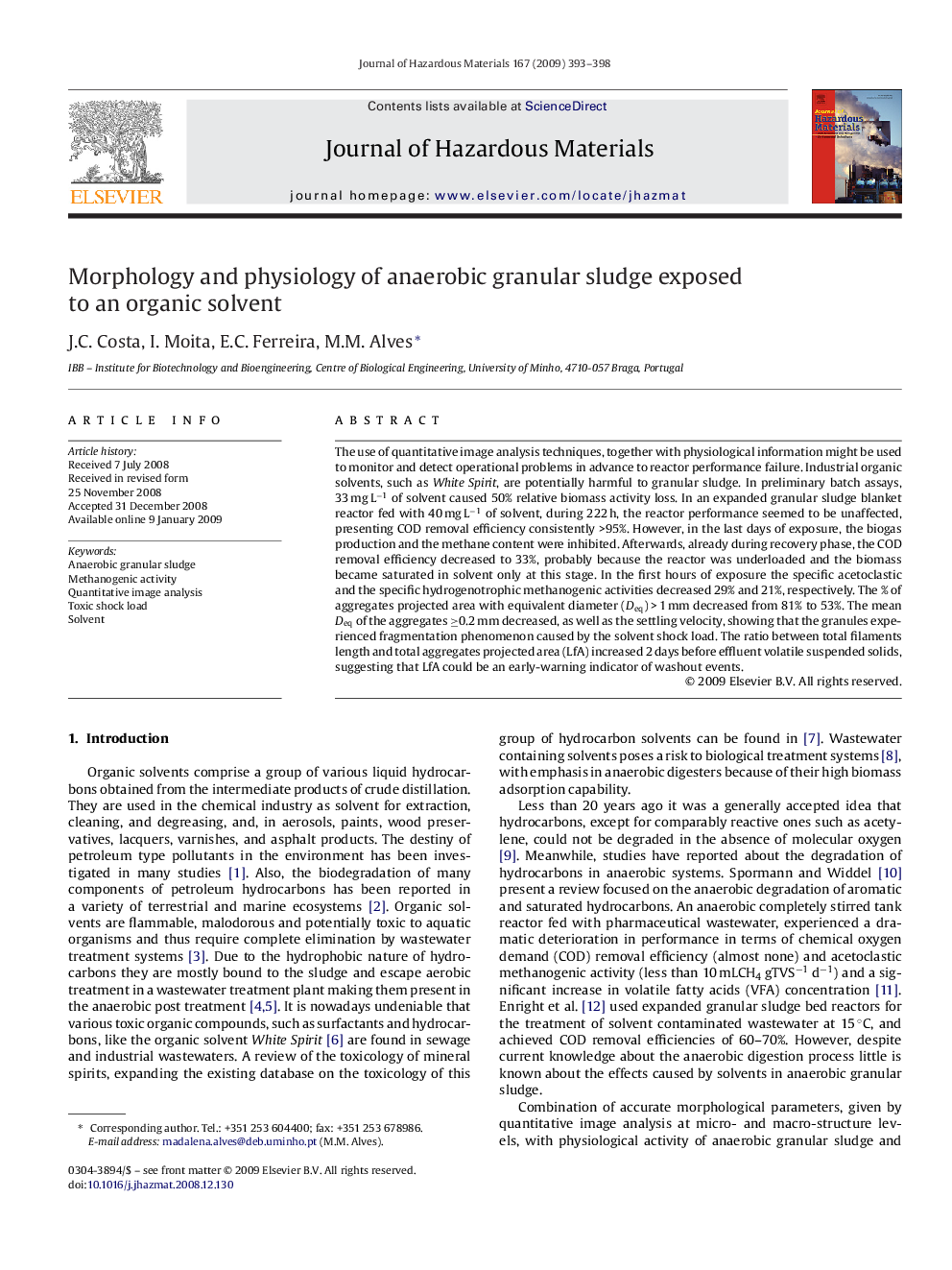| Article ID | Journal | Published Year | Pages | File Type |
|---|---|---|---|---|
| 581794 | Journal of Hazardous Materials | 2009 | 6 Pages |
Abstract
The use of quantitative image analysis techniques, together with physiological information might be used to monitor and detect operational problems in advance to reactor performance failure. Industrial organic solvents, such as White Spirit, are potentially harmful to granular sludge. In preliminary batch assays, 33 mg Lâ1 of solvent caused 50% relative biomass activity loss. In an expanded granular sludge blanket reactor fed with 40 mg Lâ1 of solvent, during 222 h, the reactor performance seemed to be unaffected, presenting COD removal efficiency consistently >95%. However, in the last days of exposure, the biogas production and the methane content were inhibited. Afterwards, already during recovery phase, the COD removal efficiency decreased to 33%, probably because the reactor was underloaded and the biomass became saturated in solvent only at this stage. In the first hours of exposure the specific acetoclastic and the specific hydrogenotrophic methanogenic activities decreased 29% and 21%, respectively. The % of aggregates projected area with equivalent diameter (Deq) > 1 mm decreased from 81% to 53%. The mean Deq of the aggregates â¥0.2 mm decreased, as well as the settling velocity, showing that the granules experienced fragmentation phenomenon caused by the solvent shock load. The ratio between total filaments length and total aggregates projected area (LfA) increased 2 days before effluent volatile suspended solids, suggesting that LfA could be an early-warning indicator of washout events.
Related Topics
Physical Sciences and Engineering
Chemical Engineering
Chemical Health and Safety
Authors
J.C. Costa, I. Moita, E.C. Ferreira, M.M. Alves,
